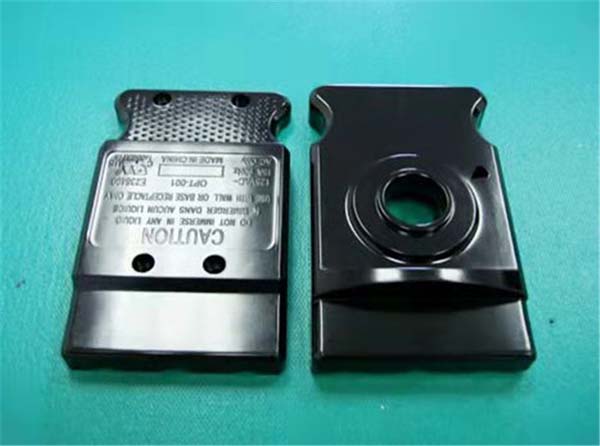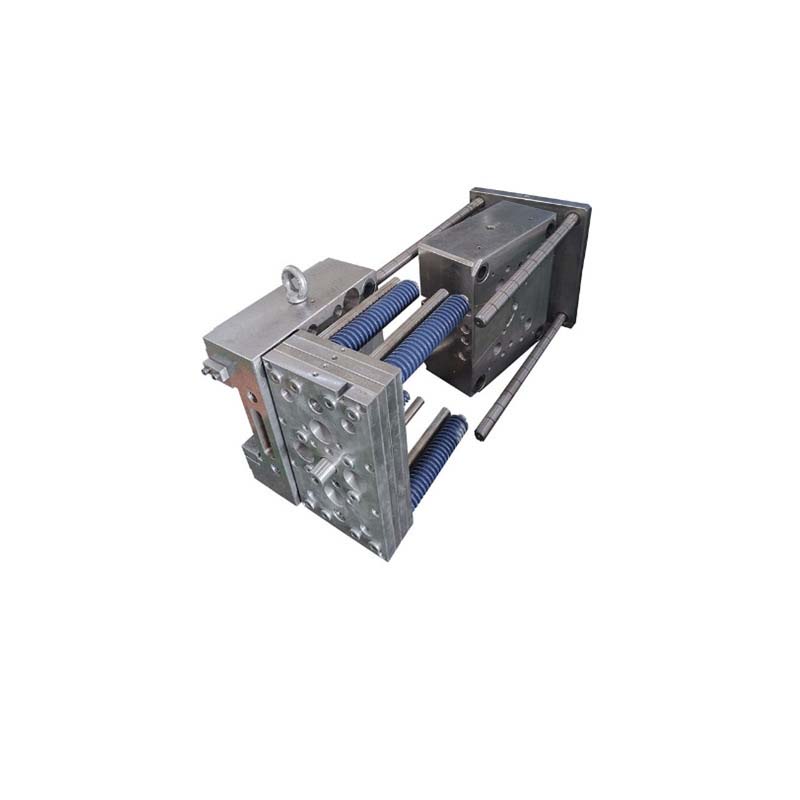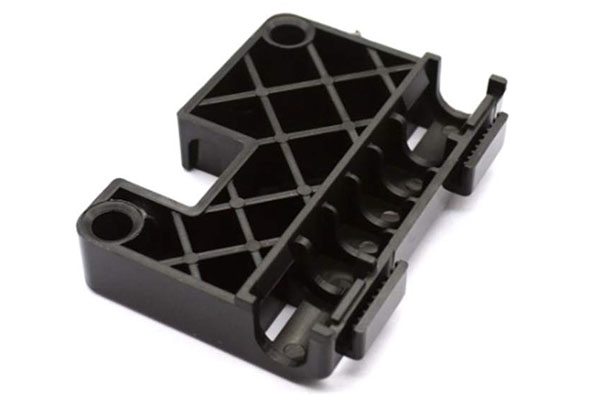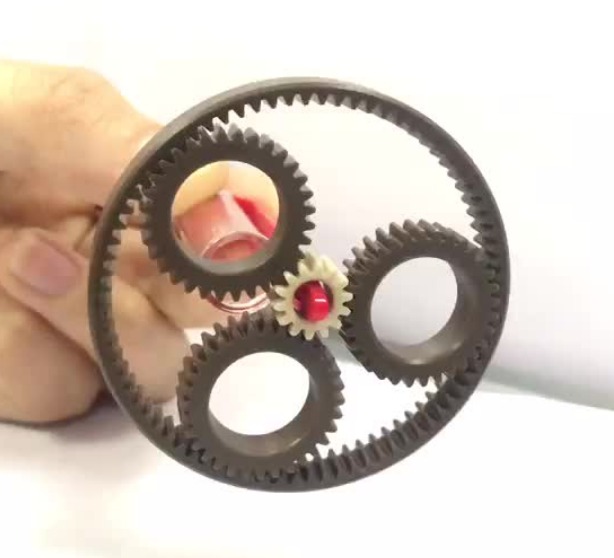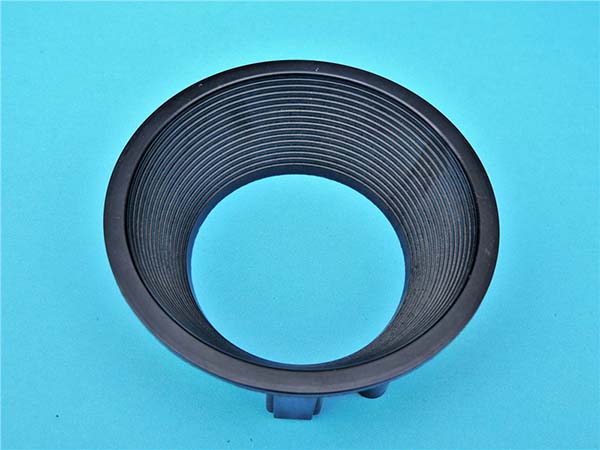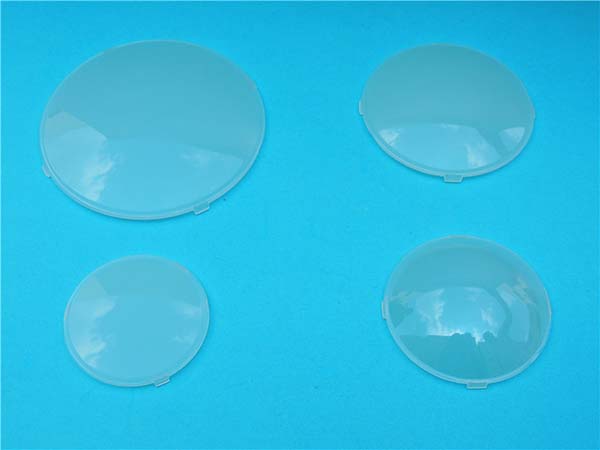Introduction
In the realm of modern mechanical engineering, plastic gear cogs have emerged as indispensable components, revolutionizing the way mechanical movements are achieved. These unassuming yet highly efficient parts are found in a vast array of applications, from the delicate mechanisms of a wristwatch to the complex systems in automotive and industrial machinery. Their importance lies in their ability to provide smooth, reliable, and often cost - effective solutions for transferring motion and power.
Plastic gear cogs have opened up new possibilities in design and functionality. They have enabled engineers to create lighter, more compact, and quieter mechanical systems. In this article, we will explore the various aspects of plastic gear cogs, including their materials, design, manufacturing processes, applications, advantages, and limitations. By delving deep into these areas, you will gain a comprehensive understanding of how plastic gear cogs are shaping the future of mechanical movements and how they can be best utilized in your projects.
What are Plastic Gear Cogs
Plastic gear cogs, also known as plastic gears, are mechanical components made from various types of plastics. They consist of a circular wheel with evenly spaced teeth, or cogs, around its outer edge. These teeth are designed to mesh with the teeth of other gears, allowing for the transfer of rotational motion and power between different parts of a mechanical system.
Basic Structure
- Hub: The central part of the plastic gear cog, which is often used to mount the gear on a shaft. It provides the connection point for the gear to the driving or driven mechanism. For example, in a small electric motor - driven device, the hub of the plastic gear is fitted onto the motor shaft.
- Rim: The outer circular part that holds the teeth. The strength and durability of the rim are crucial as it bears the forces transmitted through the teeth during operation.
- Teeth: The most distinctive feature of the plastic gear cog. The shape, size, and number of teeth determine the gear's ratio, speed, and torque - transfer capabilities. Standard tooth profiles, such as involute profiles, are commonly used in plastic gears to ensure smooth meshing and efficient power transmission.
Function in Mechanical Drives
Plastic gear cogs play a vital role in mechanical drives. They are used to:
- Change Speed: By meshing gears with different numbers of teeth, the rotational speed can be increased or decreased. For instance, in a gear - reduction system, a large - diameter plastic gear with many teeth meshing with a small - diameter gear with fewer teeth will result in a decrease in the output speed while increasing the torque.
- Transmit Power: They transfer mechanical power from a source, like an electric motor, to other components in a system. In a household appliance, such as a blender, plastic gear cogs transmit the power from the motor to the blades, enabling them to rotate at high speeds for blending food.
- Change Direction of Rotation: When two plastic gears are arranged in a specific configuration, they can change the direction of rotational motion. This is useful in applications where the output motion needs to be in a different direction from the input, such as in some types of steering mechanisms.
Manufacturing Methods of Plastic Gear Cogs
The production of plastic gear cogs involves several manufacturing methods, each with its own set of advantages, limitations, and optimal applications.
Injection Molding
Injection molding is one of the most widely used methods for manufacturing plastic gear cogs, especially for high - volume production.
Process
- Mold Design: A precisely designed mold is created based on the specifications of the plastic gear cog. The mold typically consists of two halves that, when closed, form a cavity in the exact shape of the gear, including the teeth, hub, and rim. For example, if a small plastic gear for a wristwatch is being produced, the mold will be designed with extremely high precision to ensure the accurate formation of the tiny teeth.
- Material Preparation: The selected plastic material, such as nylon or polypropylene, is first dried to remove any moisture. Moisture in the plastic can cause defects in the final product, like bubbles or poor surface finish. The dried plastic is then fed into the injection - molding machine.
- Injection: The plastic is melted inside the injection - molding machine and then injected under high pressure into the closed mold cavity. The high pressure ensures that the molten plastic fills every detail of the mold, accurately replicating the gear's shape.
- Cooling and Ejection: After the mold is filled, the plastic is allowed to cool and solidify. Once solid, the mold opens, and the plastic gear cog is ejected. The cooling time is carefully controlled as it affects the final dimensions and quality of the gear.
Advantages for Mass Production
Injection molding is highly suitable for mass production. It can produce a large number of plastic gear cogs in a short time. For instance, a medium - sized injection - molding machine can produce hundreds of gear cogs per hour. The cost per unit decreases significantly as the production volume increases. In a large - scale manufacturing facility that produces plastic gear cogs for the automotive industry, with a production volume of over 100,000 units per month, the cost per gear cog can be as low as a few cents, making it a cost - effective solution for high - volume applications.
3D Printing
3D printing, also known as additive manufacturing, is revolutionizing the production of plastic gear cogs, especially for small - scale and customized production.
Process in Plastic Gear Manufacturing
- Digital Modeling: A 3D digital model of the plastic gear cog is created using computer - aided design (CAD) software. The model can be highly customized, allowing for the creation of unique gear designs with complex geometries that may be difficult or impossible to produce using traditional methods.
- Printing: The 3D printer reads the digital model and deposits layers of plastic material, one on top of the other, to build the gear cog. Different 3D - printing technologies, such as fused deposition modeling (FDM) or stereolithography (SLA), can be used, depending on the material and the required precision. For example, FDM is commonly used for creating prototypes or small - batch production of plastic gear cogs using materials like acrylonitrile butadiene styrene (ABS) or polylactic acid (PLA).
Advantages in Customization
3D printing shines when it comes to customization. It can produce plastic gear cogs with unique tooth profiles, internal structures, or sizes. For example, in the development of a specialized robotic arm, a custom - designed plastic gear cog might be needed to fit into a tight space and transmit power in a specific way. 3D printing can quickly produce a prototype of this custom gear cog, allowing for rapid iteration and testing. A company developing a new type of medical device needed a non - standard plastic gear cog. By using 3D printing, they were able to design and produce the gear within a week, significantly reducing the development time compared to traditional manufacturing methods.
Machining
Machining is another method for producing plastic gear cogs, although it is less common for high - volume production due to its relatively high cost and longer production time.
Process and Application Scenarios
- Material Selection: A solid block of plastic material, such as polycarbonate or acetal, is chosen. The material is selected based on the requirements of the gear, such as its strength, durability, and chemical resistance.
- Machining Operations: The plastic block is then machined using various cutting tools, such as milling cutters or lathes. In the case of a plastic gear cog, the teeth are typically cut into the circular blank using a milling operation. First, the outer diameter of the gear is turned on a lathe to the required size. Then, a milling machine is used to cut the teeth into the gear blank. The milling cutter is carefully guided to create the precise tooth profile, following the design specifications. This method is often used when high precision is required, such as in aerospace or high - end industrial equipment. For example, in the production of a plastic gear cog for a satellite's delicate mechanical system, machining can ensure that the gear meets the strict tolerances and performance requirements.
Comparison with Other Methods
| Manufacturing Method | Precision | Cost (Low - Medium - High) | Production Cycle | Suitable for |
| Injection Molding | High (depends on mold quality) | Low (for high - volume) | Short | High - volume production of standard - design gears |
| 3D Printing | Medium - High (depends on technology) | Medium (for small - batch) | Medium (longer for complex designs) | Custom - designed, small - batch production, prototypes |
| Machining | High | High | Long | High - precision, low - volume production, custom gears with tight tolerances |
In summary, each manufacturing method of plastic gear cogs has its own characteristics, and the choice of method depends on factors such as production volume, design complexity, and required precision.
Comparison with Other Gear Materials (Metal, etc.)
When considering the use of plastic gear cogs, it is essential to compare them with other common gear materials, such as metal. The following table provides a detailed comparison of plastic and metal gears in terms of several key properties:
| Property | Plastic Gear Cogs | Metal Gears |
| Strength | Generally lower in tensile and shear strength compared to metal. However, with proper design and material selection, they can meet the requirements of many low - to - medium load applications. For example, nylon - based plastic gears can withstand moderate loads in household appliance applications. | High strength, suitable for high - load applications. Steel gears are commonly used in heavy - duty industrial machinery where high torque transmission is required. |
| Cost | Low cost, especially in high - volume production. Injection - molding of plastic gears allows for mass production at a relatively low cost per unit. For instance, plastic gears for toys can be produced in large quantities at a very affordable price. | Higher cost, especially for high - quality alloys. The manufacturing processes for metal gears, such as machining and heat - treatment, are more complex and expensive. Precision - machined metal gears for aerospace applications can be extremely costly. |
| Weight | Lightweight, which is beneficial for applications where weight reduction is crucial. In the automotive industry, using plastic gear cogs in some components can contribute to overall vehicle weight reduction, improving fuel efficiency. | Heavy, which may be a disadvantage in applications where weight needs to be minimized. For example, in portable electronic devices, the use of metal gears would add unnecessary weight. |
| Corrosion Resistance | High corrosion resistance, especially to moisture and many chemicals. Plastic gears are ideal for use in environments where corrosion is a concern, such as in the food - processing industry or in outdoor applications exposed to moisture. | Prone to corrosion, especially in the presence of moisture and certain chemicals. Metal gears often require additional protective coatings or materials to prevent corrosion, adding to the cost and complexity. |
| Noise and Vibration | Low noise and vibration during operation due to their inherent damping properties. This makes them suitable for applications where quiet operation is desired, like in home appliances and office equipment. | Higher noise and vibration levels, especially in high - speed applications. Metal gears may require additional damping mechanisms to reduce noise and vibration. |
| Wear Resistance | Moderate wear resistance. However, advancements in plastic materials and lubrication techniques have improved their wear - resistance properties. Some plastic gears with added fillers can have enhanced wear resistance. | High wear resistance, especially for hardened metal gears. They can withstand continuous high - load and high - speed operation with minimal wear in many industrial applications. |
| Design Flexibility | High design flexibility. They can be easily molded into complex shapes, allowing for the integration of multiple functions into a single gear. For example, plastic gears can be designed with built - in hubs and mounting features. | Limited design flexibility compared to plastic. Machining metal gears into complex shapes can be challenging and expensive, often requiring multiple manufacturing steps. |
In summary, plastic gear cogs offer distinct advantages in terms of cost, weight, corrosion resistance, noise reduction, and design flexibility, making them a preferred choice for many applications. However, metal gears still have their place in high - load, high - precision, and high - wear - resistance applications.
Yigu Technology's Viewpoint
As a non - standard plastic metal products custom Supplier, Yigu Technology firmly believes in the vast development potential of plastic gear cogs in the field of customization. With the continuous evolution of technology and the increasing demand for unique mechanical solutions, the flexibility of plastic gear cogs to be customized is a significant advantage.
Yigu Technology has rich experience in meeting customers' special requirements. We understand that each project has its own set of challenges, whether it's an unusual gear ratio, a specific material requirement, or a unique design for space - constrained applications. Our advanced manufacturing capabilities, including precision injection molding and 3D printing, enable us to produce high - quality plastic gear cogs that precisely match our customers' specifications. By closely collaborating with clients from the initial design concept to the final product delivery, we ensure that the plastic gear cogs not only function flawlessly but also enhance the overall performance of the mechanical systems they are integrated into.


